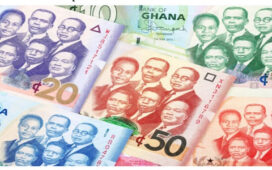Stay informed with free updates
Simply sign up to the Currencies myFT Digest — delivered directly to your inbox.
After a frankly insane few days, the Taiwanese dollar has fallen back past the 30-per-US dollar mark again. But Eurizon SLJ’s Stephen Jen reckons that its recent rollercoaster is a harbinger of a wider, violent repricing of Asian currencies.
Or as the hedge fund manager puts it in his latest note to investors:
. . . We continue to believe the risks of investors being blindsided by such a non-linear sell-off in the dollar continue to rise. The sharp sell-off in USDTWD last week is such an example. There will be others, we predict.
Eurizon SLJ is a pretty small FX-focused hedge fund mostly owned by Eurizon Capital, which is in turned owned by Intesa Sanpaolo. But Jen is one of the bigger names in FX, having led Morgan Stanley’s currency strategy team until 2009. While there, he coined the “dollar smile” theory — that the greenback does particularly well when the US economy is either booming or imploding.
As Alphaville has written before, he has been pretty down on the dollar for a while now. Jen has been particularly worried about the danger that Chinese “shadow reserves” get yanked out if the US currency starts to weaken, and sees the recent Taiwanese dollar ructions is just the beginning:
We have long warned about the ‘Avalanche’ risk for the dollar. There could be USD2.5 trillion worth of ‘snow’ in China and more from the likes of Taiwan, Malaysia, and Korea, rising at a pace of USD500 billion a year — we conservatively guesstimate. Only a modest proportion of the very large trade surpluses these countries have earned have been repatriated back home, with the bulk of the export earnings being hoarded by exporters in USD deposits.
Like in actual avalanches, ex-ante, many might dismiss the warnings, but ex-post, all would admit that it was an obvious risk. We are still waiting for more triggers, but we see the sharp sell-off in USDTWD this week from this Avalanche perspective. We predict there will likely be other sudden lurches lower in USDAsia in the coming quarters. Corrections in USDAsia could pacify the US, as Asia accounts for more than half of all US trade deficit, making this a fundamentally benign development, except for those caught long dollars.
Jen says that, based on their cumulative trade surpluses relative to the size of the economy, China, Taiwan, Singapore and Malaysia have the highest “avalanche risk”.
And the currencies of all four have certainly strengthened markedly lately (even the heavily-managed renminbi), albeit all have given up some of the gains over the past two days.




So does the recent weakening suggest that this has now fizzled out already? Jen doesn’t think so.
The overhang of liquid dollar holdings is just too large if the dollar weakens, the Fed cuts interest rates, and China stages a cyclical rebound. In other words, both the push and pull factors that kept the export earnings in dollars outside the home countries in the past years will potentially flip signs in the coming quarters. At the same time, many of those holding long-dollar exposures know very well that the dollar is over-valued.




